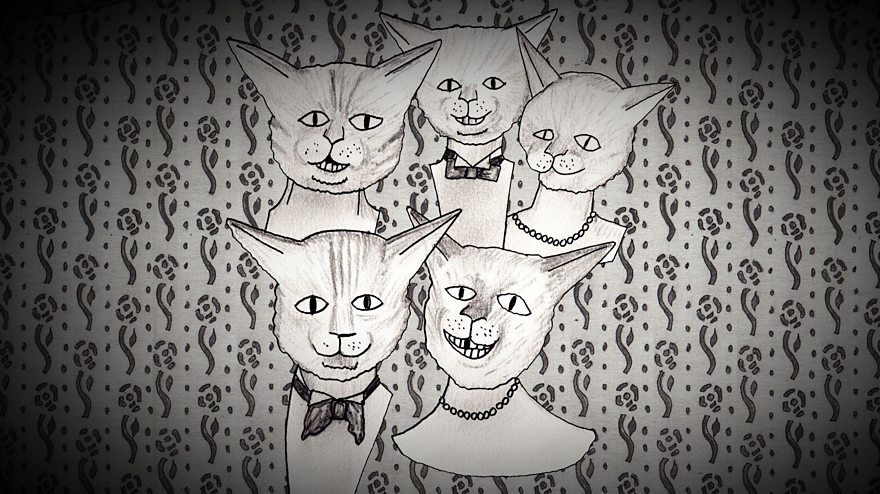The making of Decameron Nights

Humans have been telling stories since before recorded history. We would gather around campfires and hearths, communing with each other in the audience of oral storytellers. Masters of narrative and sound, they orchestrated stories to engage our senses, trigger our emotions and draw us into other worlds - all without a visual anchor.
The use of sound is integral in storytelling and audio led storytelling remains a powerful force, but modern life means we no longer gather in the way we used to. Radio and other technological advances allow us to come together in different ways, but this has come at the expense of the perspective of place that early storytellers infused their performances with.
Through subtle sonic manipulation they could enhance their work, morphing or changing the listening space as needed for dramatic effect. They electrified their tales with a sense of shape, texture and intimacy that is difficult to replicate with sounds coming from a single source or speaker. Ö÷²„“óŠć R&D took on the challenge of creating a tool that provides storytellers with the means of incorporating this component into their work and Audio Orchestrator is the result. Audio Orchestrator is a spatial audio production tool that allows storytellers to harness the speakers found in connected devices to generate dynamic listening spaces where the action revolves around the listener.
Decameron Nights is the first public-facing pilot produced using the tool since it launched on MakerBox. We sat down with Suzanne Andrade, Paul Barritt and Jo Cowley from 1927 to discuss what reimagining their work in a new form was like and what was involved in the process.
MakerBox Team: Welcome 1927, so to begin with can you tell us about Decameron Nights, what was the editorial concept behind the project?
SA: Decameron Nights began life as a theatre show, Roots, which was ten folk tales and one [story would] merge into the next etc. One of the things we'd wanted to do, and didn't quite, is to split it into different themes.
MakerBox Team: And then COVID happened.
SA: We were initially going to turn [the show] into ten little podcasts, but when Culture in Quarantine and Radio 3 got involved, they suggested that we fit it into three 15-minute broadcasts. We looked at most prominent themes and grouped them around selfish ambition, love and fortune.
PB: We called it the Decameron Nights, and we used the theme of The Decameron due to the COVID outbreak. The whole atmosphere ended up creating certain decisions and gave a frame that we'd been looking for.
JC: [Of the radio version] A friend said "it's like you've painted pictures with words" and interestingly when we moved to Audio Orchestrator, it felt like we were trying to paint a bigger experience for the listener more in line with the sensory experience you get in a physical environment.

MakerBox Team: Do you think that the audience got that sense of a larger picture?
PB: I think that the Audio Orchestrator experience painted a fuller picture.
JC: Yes, it is more of a sensorial experience.
PB: I sometimes find that I drift off from radio plays, whereas with [Audio Orchestrator] you're forced to put yourself in the room, and it creates a space around you. You can develop more of an environment.
JC: Do you think that is because when you put the radio on - you press [and it starts] whereas when you take an LP out, you choose to listen slightly differently anyway?
PB: Well yeah, [with an LP] you've got to do all the setup, haven't you? You're already invested in it.
MakerBox Team: Can you remember what it was like when you were first introduced to Audio Orchestrator experiences?
SA: It's really exciting.
JC: I'm a non-technical person - and I don't have fancy speakers in my house. What was amazing was realizing I had a really great sound system using just a phone and a laptop.
PB: I really liked the string quartet [Ö÷²„“óŠć Pick a part]. I saw a lot of potential there.
MakerBox Team: How long did it take to produce your audio orchestrated story?
JC: It was a month - we had our first conversation on July 9th, and we released on August 10th. We had completed the original audio [the radio version], so it was converting what already existed.
MakerBox Team: And did you jump straight into the process, or did you carefully plot out all the different points that you wanted to orchestrate?
PB: We jumped in there and just tried a load of stuff.
SA: We probably jumped in too quick. We didn't know the rules, and you should never approach a creative tool presuming you know it. Ideally, you'd experiment with some bits, experience it, then go back when that doesn't work. That way you keep really collaborative with the tool itself as well as your ideas for it.
MakerBox Team: You had already delivered the radio version when you began this process, so you weren't working from a blank slate. How do you think that impacted the experience and challenge what you had already made?
PB: Yeah, a lot of it was there already. The stories were set, and it seemed quite obvious which bits would be good to move around, and actually some bits we overdid it. Through working with it [Audio Orchestrator], you realise what was needed and what wasnāt.
MakerBox Team: And how did the different forms that the story took influence your design thinking?
SA: We pragmatically, chose the stories that work well in the stage show; the ones that get a good laugh, the ones with characters that people really like. In the stage show we had [the audience] see so much. We didn't hear it as much. You never heard anyone being eaten, we would have found that too obvious.
SA: As soon as we moved to radio [we] thought, actually āIt's a really nice punctation pointā. We punctuated it in a different way.
SA: We picked Fat Cat - and we were given a chance to explore him as this character - as this entity - this huge, capitalist, cat. And then just by moving the purrs around, moving the voice around and moving the eating sounds you could punctuate it in a completely different way.
JC: When you've got multiple audiences, that will impact the way you think about servicing them, how it is experienced.

MakerBox Team: So it was a conscious decision not to use all of the toolās features and just focus on moving different sounds around?
SA: I think we felt it best served the piece. We like to control every aspect of our stage shows, and we went into this with a similar thing. We wanted people to just set up, sit back and hear the stories. You want to be put in that environment. You don't need the voice dotting all about like a mosquito. We didn't want to detract from [it].
JC: The other functionalities might have been of interest with the right project.
MakerBox Team: Right, and if you were to build an experience from the ground up, without limitations you had, would you approach it in the same way?
PB: We would approach it differentlyā¦
SA: Yeah, I think what you'd want to do is developing it very much in partnership with the tool - really developing it with the technology.
MakerBox Team: What was the biggest difference in how you traditionally produce your audio for your other projects, and how you went about working with Audio Orchestrator?
PB: I think it's got a few similarities, actually, just in the practical way that it [Audio Orchestrator] worked. It wasn't completely alien. We had quite a lot of sound in Golem.
JC: There are actually some similar parallels with animation projects and stage experiences - which is an odd thing because it's a sound experience. But for us as a company, because of the systems that we work through to create theatre performance experiences, it wasn't vastly different.
MakerBox Team: What was the biggest challenge to using the tool that you found in A) Your production and B) the tool itself? What do you say that biggest challenge was?
PB: For me programming - Once we figured it out it was pretty straightforward to get the audio moving around the devices well. Putting in the stems was very easy.
MakeBox Team: If you had one piece of advice for a creator picking up the tool for the first time what would that be?
SA: Get experimenting with the tool, that's how you'll get the most out of it. Don't presume you know the rules. Get stuck in with it and don't get everything perfect. Get your voices on, shove your music on, get your story in there and work very closely with it.
PB: It is an easy program to experiment with. It's not overpowering or complicated so have a go.
JC: Play with the possibilities of where it might be used. It doesn't just have to be experienced in living rooms. It's something that could be experimented with within really interesting contexts.

